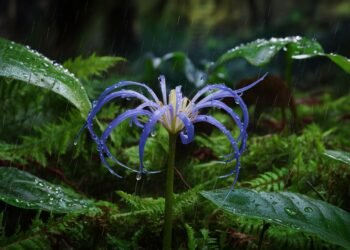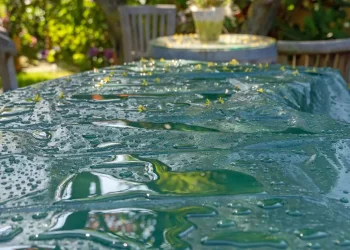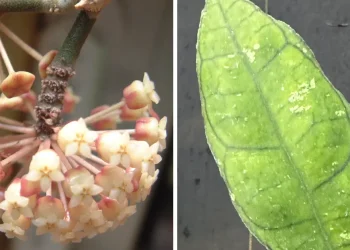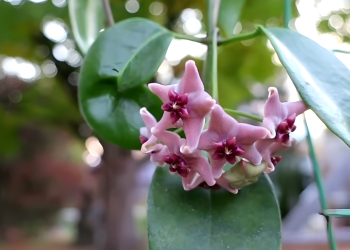Picture yourself strolling through a forest. When suddenly, your eyes lock onto a cluster of small, juicy berries that resemble wild strawberries. This can be very dangerous, and when it comes to wild plants and fruits, it’s wise to leave them be especially unfamiliar species. But fortunately, after you’re done reading this article, snake berries will no longer be unfamiliar to you, and you’ll be able to tell whether they are edible or toxic to humans.
Well, I’ll tell you the answer right away – it depends. The term “snake berry” describes several plants which all produce these small, round fruits. To this point, it’s all certain. But after that, it really depends. Some sources claim that snake berries can be toxic, while others suggest that they are completely safe to eat.
In this article, we’ll take a closer look at snake berries and some studies that researched their effects on human well-being. And by the end, you’ll be able to tell if snake berries are poisonous or edible.
What are Snake Berries
The term “snake berries” refer to several species of wildly growing berry plants in North America. The plant grows small round fruits that range from bright red to orange.
While their name may evoke a sense of danger, snake berries can range from toxic to edible, and no one really knows where the name comes from. Some refer to them as “false strawberries,” so it’s possible that the adjective “snake” also points out the fact that snake berries are not strawberries, even though they may look like them at first glance.
Types of Snake Berries
When it comes to snake berries, there are 5 types to explore that differ in appearance and toxicity.
- Actaea rubra: Also known as red baneberry, these snake berries stand out with their clusters of bright red, glossy fruits. Caution is advised, as the berries of this species can be toxic if ingested.
- Clintonia borealis: Commonly referred to as bluebead lily, this variety features stunning blue-black berries that dangle from delicate stalks. While not typically considered poisonous, it can cause nausea and stomach cramping at higher doses.
- Maianthemum dilatatum: Known as the false lily of the valley, this type boasts small, round, and vibrant red berries. They are generally considered safe to eat, but as always, it’s best to verify their identification before eating.
- Potentilla indica: Also called mock strawberry, this species presents bright red berries resembling strawberries. While they are edible, the taste is often described as bland or lacking the sweetness found in true strawberries.
- Solanum dulcamara: Commonly known as bittersweet nightshade, this vine-like plant bears red berries that transition to a striking shade of orange. The berries contain toxic compounds and should be avoided.
Are Snake Berries Poisonous

Now, let’s take a closer look at each of the types of snake berries and find out whether or not they are toxic. Starting with Actaea rubra.
Red baneberry (Actaea rubra) contains poisonous essential oil in all parts of the plant, especially in the berries and roots. If ingested, it can lead to various symptoms of poisoning, including gastroenteritis, stomach cramps, headache, dizziness, vomiting, diarrhea, and even circulatory failure.
Bluebead lily (Clintonia borealis) is not poisonous. However, they can cause nausea and stomach cramping as they are quite foul tasting. So this type of snake berry should be avoided anyways.
False lily of the valley (Maianthemum dilatatum) is also not considered toxic. In the past, especially the roots and leaves were used medicinally. The berries can be eaten but are not particularly tasty. However, this snake berry plant is especially popular with gardeners as a groundcover, as it is tolerant to shade and drought.
Mock Stawberry (Potentilla indica) was very abundantly considered as poisonous in local guides. It was just a confusion between “not tasty to eat” and “toxic.” This snake berry is completely edible but bland.
Bittersweet nightshade (Solanum dulcamara) is a type of snake berry where studies diverge the most. While some sources report that this snake berry is highly poisonous, others find only mild toxicity or even some benefits when taken in small doses. However, that was a controlled experiment, and it’s not advised to eat bittersweet.
How to Identify a Snake Berry
If you’re planning a little adventure to the woods and want to taste real organic and fresh berries, it’s crucial to identify them correctly. You don’t want to mix up edible snake berries with toxic ones or other wild berries. Here are a few key characteristics to help you distinguish snake berries.
- Shape and Size: Snake berries typically resemble small, round fruits similar to wild strawberries or blackberries. Pay attention to their size, which is usually smaller compared to commercially cultivated berries. They have typically no more than half an inch (1.2 cm) in diameter.
- Color: Snake berries often exhibit a deep red or reddish-black color when ripe, although shades may vary slightly depending on the species. This rich hue is also a good indicator of their maturity.
- Texture: The skin of snake berries is usually smooth and glossy, giving them an attractive sheen. Be cautious of any berries with damaged or bruised skin, as this may indicate spoilage, and that applies to any berries.
- Thin Woody Stems: Snake berries often grow on thin, woody stems that usually include thorns.
- Leaf Arrangement: Snake berries typically grow on plants with compound leaves consisting of three to five leaflets arranged in a palmate or pinnate pattern.
- Clustered Appearance: They tend to grow in tight clusters or groups, with multiple berries stemming from a central point.
Palmate arrangement is when the leaflets spread out from a central point, resembling the shape of an open hand with fingers extended. Pinnate arrangement, on the other hand, is when multiple leaflets are arranged along a central stem, creating a feathery appearance.
What to do If you Ingested Snake Berries
If you accidentally ate snake berries, no need to panic. As previously mentioned, some snake berries are indeed toxic to humans, but they are not crazy poisonous, not in small quantities.
If you haven’t eaten handfuls of it, it’s unlikely you’ll experience any symptoms at all. You can experience some slight discomfort, but it should fade away quickly.
But if the symptoms get worse or stay after a few hours, you should seek medical help. Be prepared to provide details about the berry you ingested, any symptoms you’re experiencing, and the approximate quantity consumed.
This also applies to your dog or any other pet.
Conclusion
Snake berries come in a few variations, each with its own characteristics. While some of them are indeed edible, although not very tasty, others are toxic and can be poisonous both to humans and pets. So you should also keep your dogs and other furry companions away from snake berries to prevent any potential harm.
It’s important to learn about snake berries and their characteristic look, as especially Potentilla indica or commonly known as Mock Strawberry or False strawberry, can be deceptive in appearance as they closely resemble small, wild strawberries but often lack the same level of sweetness and flavor.











